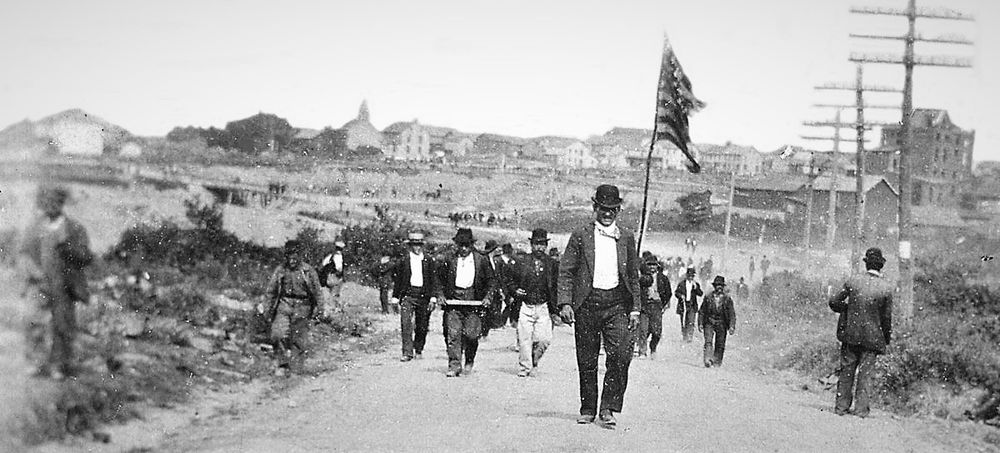
Three speakers will give illustrated presentations on a different facet of local anthracite history, followed by a question-and-answer session on Friday, Jan. 24 at 6:30 p.m. in the campus' Hawk Lecture Hall, located in the Business Building. The event is free and open to the public.
DUNMORE, Pa. -- The story of anthracite coal mining touches most aspects of life in northeast Pennsylvania, including the origins of Penn State Scranton. Given that, it’s fitting that the campus will be among the venues hosting programs for the region’s observance of Anthracite Mining Heritage Month.
On Friday, Jan. 24, the campus' Community Event Series presents the educational program, “Telling and Understanding Anthracite’s Unique Story,” from 6:30 to 8 p.m. in the Hawk Lecture Hall of the campus’ Business Building.
The event is free and open to the general public. Light refreshments will be served.
At the program, three speakers will give illustrated presentations on a different facet of local anthracite history, which will then be followed by a question-and-answer session.
The speakers are: Paul Shackel, professor of anthropology at the University of Maryland, who will present “Remembering Lattimer”; Bode Morin, historic site administrator at the Pennsylvania Anthracite Heritage Museum and Scranton Iron Furnaces and Eckley Miner’s Village, “Contextualizing the Past in Anthracite Heritage”; and Philip Mosley, distinguished professor emeritus of English and comparative literature at Penn State Scranton, “Historical Sites as Commemorative Mode: Three Coal Mine Tours.”
Michael Knies, associate professor and special collections librarian at the University of Scranton, will serve as the program’s moderator.
The program is just one of numerous events scheduled to take place locally during Anthracite Mining Heritage Month, which centers around remembering the many ways in which the coal industry dominated regional life from the late 1800s to the middle of the 20th century.
The Penn State Scranton campus is itself a reflection of that past, having been developed on 45 acres of former Hudson Coal Co. land during the 1960s.
During last year’s Heritage Month, the campus hosted a screening of Joe Sapienza’s documentary, “Centralia: Pennsylvania’s Lost Town.”
When that proved to be a success, program founder and coordinator Robert Wolensky, Ph.D., of the Anthracite Heritage Foundation and King’s College, proposed the “Telling and Understanding Anthracite’s Unique Story” panel, said Mosley, whose presentation will focus on anthracite history through the lens of the region’s three coal mine tours in Scranton, Ashland and Lansford.
“I’ve always been interested in local history, so on arriving in NEPA from the U.K. in 1988, I took an opportunity to explore the fascinating history of the anthracite region,” Mosley said. “My interest was greater for having moved from an area of the West of Scotland, where coal mining had also been a major industry.”
As a scholar of literature, Mosley grew especially interested in the myriad ways in which writers have interpreted anthracite history. That led him to compiling and editing the anthology “Anthracite!” in 2006.
Published by the University of Scranton Press, the book includes six coal region plays centered around subjects like the Molly Maguires, the 1963 Sheppton mine tragedy, and the Anthracite Strike of 1902 led by the revered United Mine Workers of America (UMWA) leader Johnny Mitchell.
From there, Mosley became fascinated with the now 57-year-old Centralia mine fire, which resulted in him publishing an article on film representations of the subject in the Mining History Journal.
“Anthracite coal defined NEPA economically, socially and culturally. To a certain extent, its legacy still impacts how we live in this area and influences how we may envisage a better future for the next generations,” Mosley said.
“In the famous words of philosopher George Santayana: ‘Those who fail to learn from history are doomed to repeat it.’ I believe, therefore, it behooves us to understand and remember that history; not only the pride, strength and bonds it gave to the people of this area but also its devastating human, economic and environmental costs. In my humble opinion, this history deserves to be taught in every regional high school and college, and it dismays me to see that invariably it is not.”
Morin’s presentation will take a look at how anthracite heritage tourism has grown and evolved since the regional decline of coal mining in the post-World War II era.
“There was an article published in the 1960s that said the only economic salvation for the Anthracite region was heritage tourism. At the time, there were a lot of breakers and other structures that could have been converted into heritage destinations,” Morin said. “While a lot of the big preservation projects didn’t happen primarily due to cost, we have three mine tours and over 40 groups promoting regional heritage. Many of these are internet based, but the heritage sentiment is still very strong.”
Shackel, meanwhile, will provide an overview of the 1897 massacre in Lattimer that resulted in the deaths of at least 19 striking miners of mostly Eastern European descent. He’ll also discuss his archaeological team’s survey to locate the site of the massacre.
In fact, it was Lattimer that first brought Shackel to the area in 1997, when he attended a ceremony commemorating the tragedy’s 100th anniversary.
“I was intrigued by the many debates people were having related to the meaning of Lattimer. All histories have different pasts, and Lattimer is no exception,” Shackel said. “My presentation looks at the larger social context of the event, especially how new immigrants were treated at the turn of the late 19th and early 20th centuries. This heritage provides a nice context for understanding the way the new immigrants are perceived, treated and accepted into the community today.”
“These community events,” he continued, “are a great way to hear different perspectives about how people view the past and how they might relate the past to the present.”